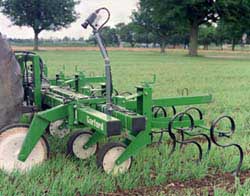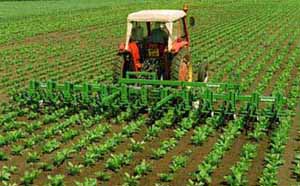Computer vision based, guidance system for non-chemical weed control
This project was concerned with reducing agrochemical inputs through the use of inter-row cultivation to control weeds. This practice goes back to Jethro Tull’s invention of the seed drill in the 18th Century. However, the advent of herbicides all but eliminated inter-row hoeing in the UK. Our objective was to reinvigorate this environmentally friendly technique and make it commercially viable again by the application of modern robotics technology. Defra funded an investigation into the potential for use in cereals and with support from the British Beet Research Organisation we extended the research to cover sugar beet. Within this project we collaborated with ADAS, IACR, Garford Farm Machinery, Robydome Electronics and KRM Ltd.
The principle technical problem was to locate and track the crop rows such that cultivators could be brought into close proximity to crop plants, thus maximising weed kill, without reducing yield. We chose to develop a non-contact sensing system using low cost CCD video cameras and computers. This approach had the advantage of being very flexible in respect of alternative crops and growth stages. However, in agricultural fields we were faced with a number of challenges. These included naturally variable lighting, crop emergence that may be incomplete and weeds that tend to mask crop rows.
Our approach had two principle innovative steps. The first was in the initial image processing in which we exploit prior knowledge of crop row spacing to identify crop rows. The second was in the application of a tracking algorithm to track row location between images. Together these give very reliable performance under a wide range of conditions typically placing cultivators well within +/-3cm at speeds of up to 10kph and beyond. This performance has proved commercially attractive. Working with Garford Farm Machinery and Robydome Electronics we brought a product to market in 2001 under the brand name Robocrop.

